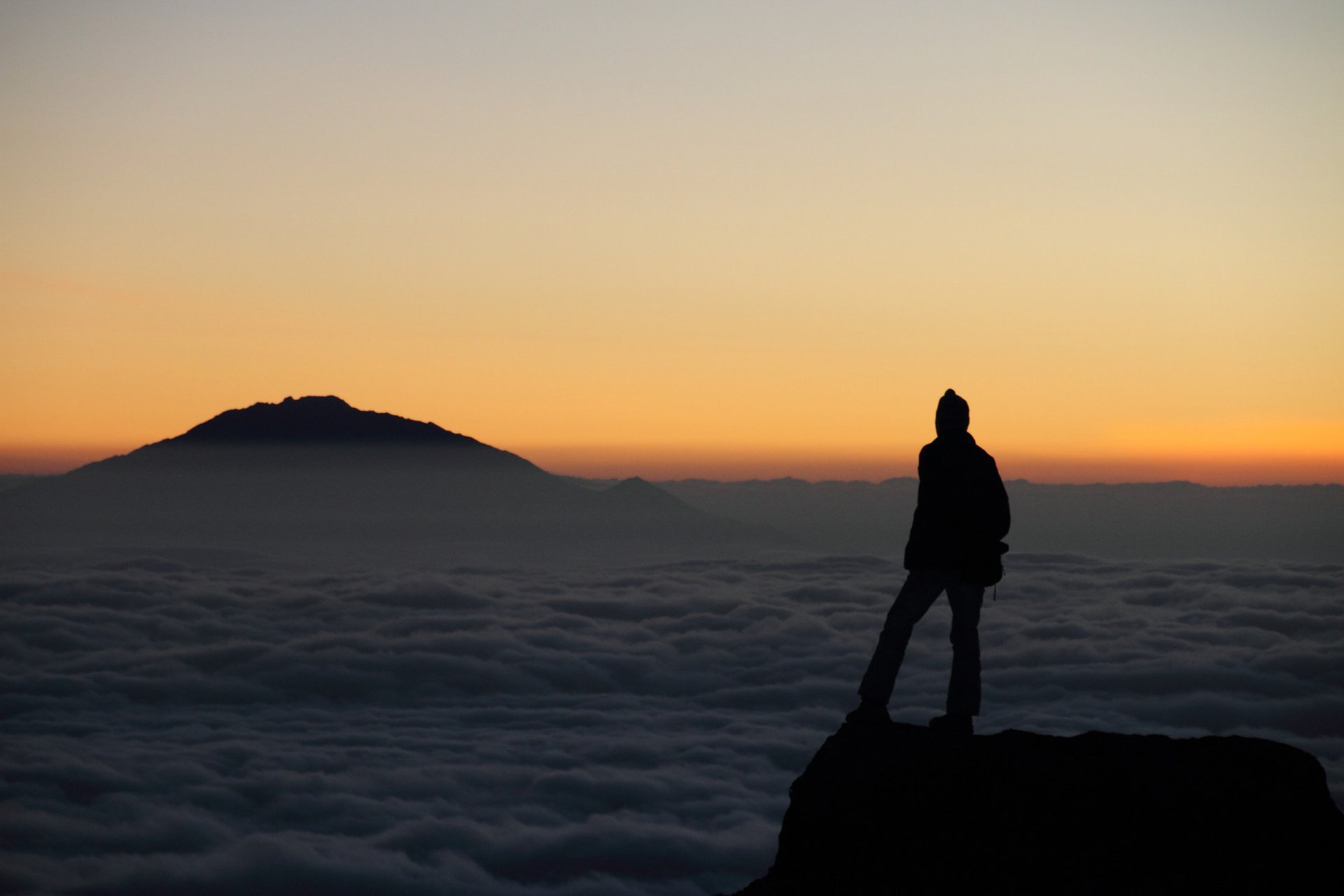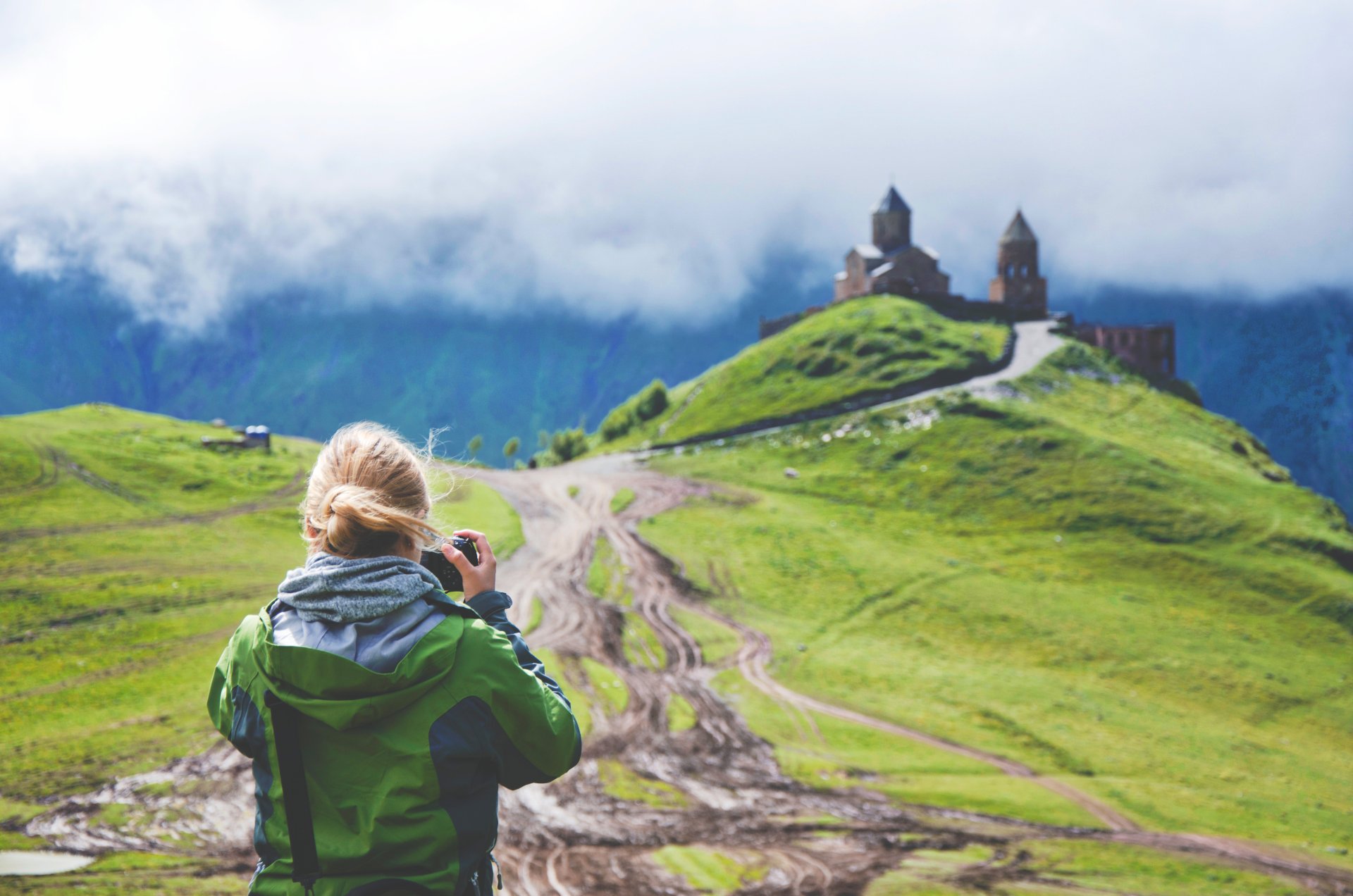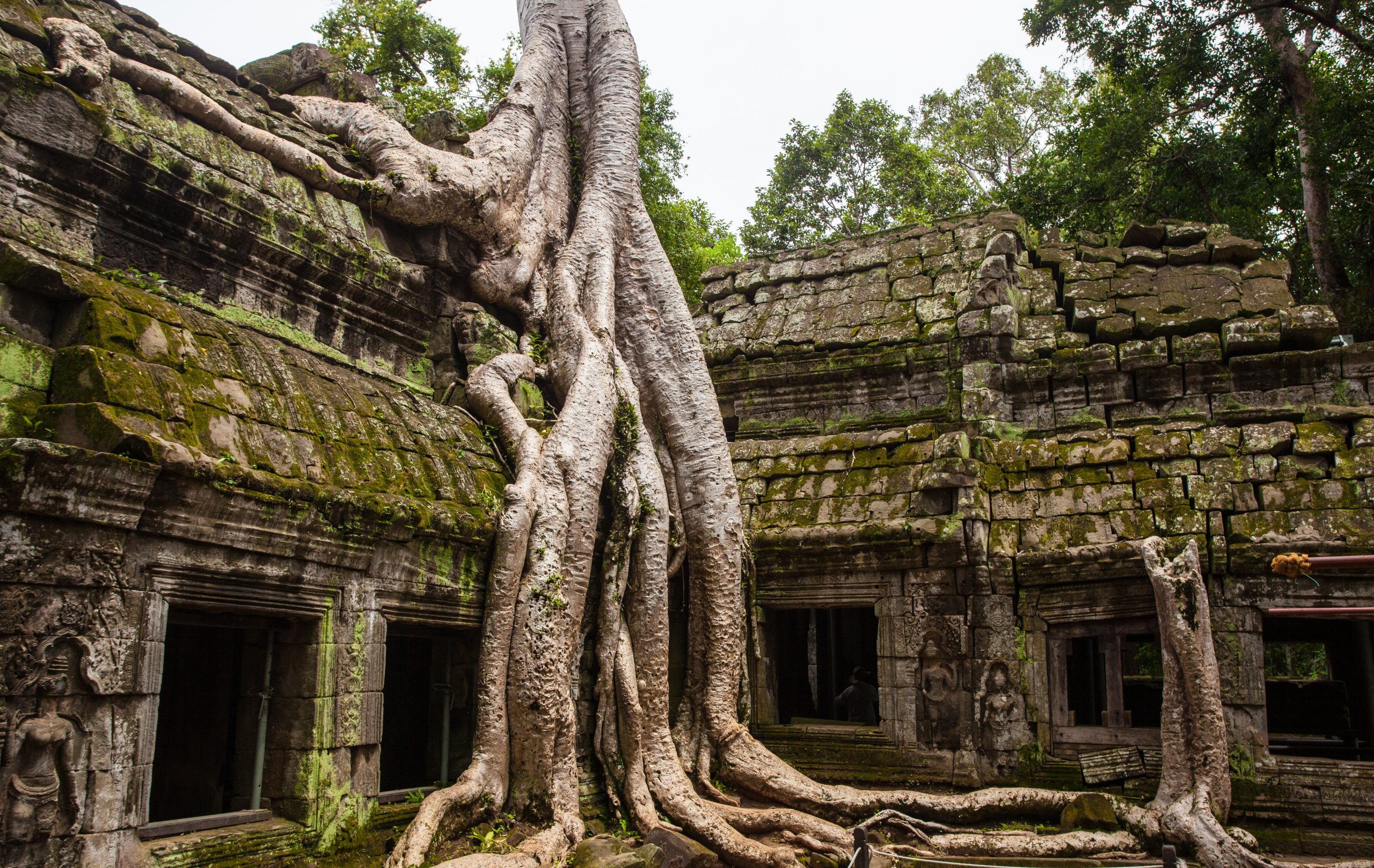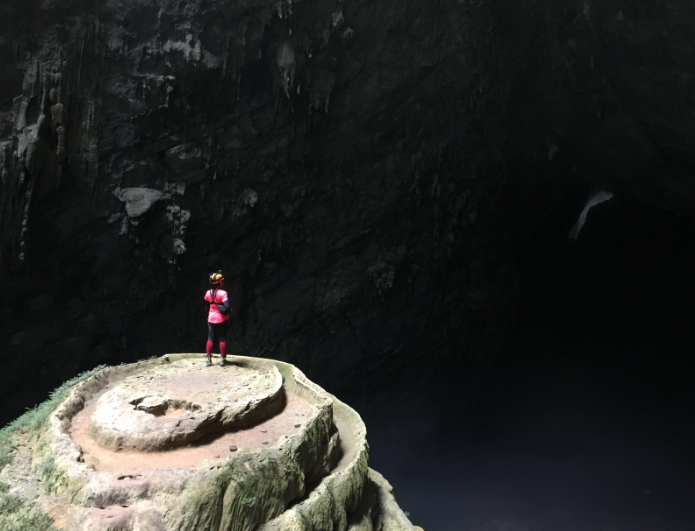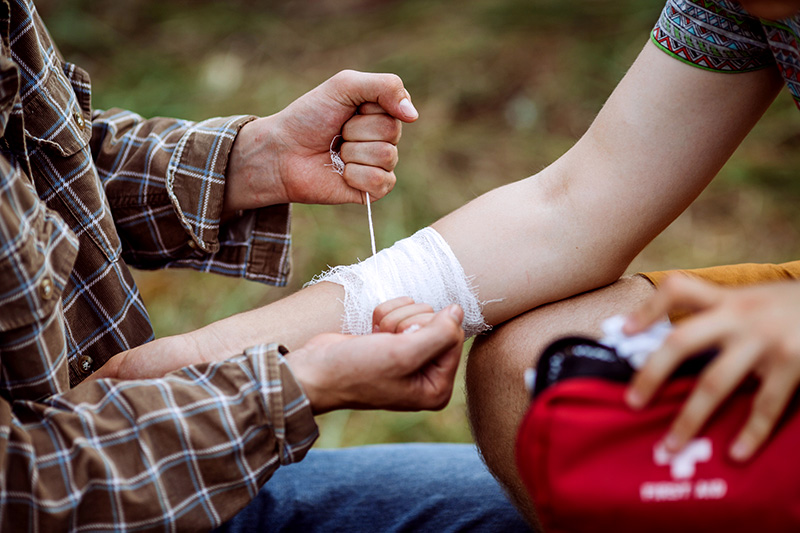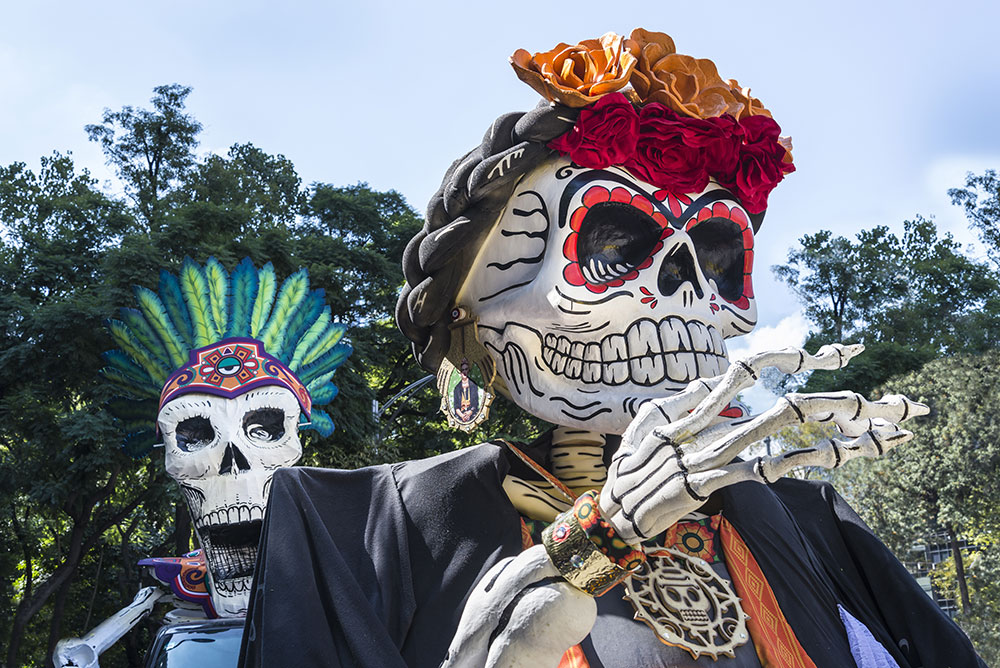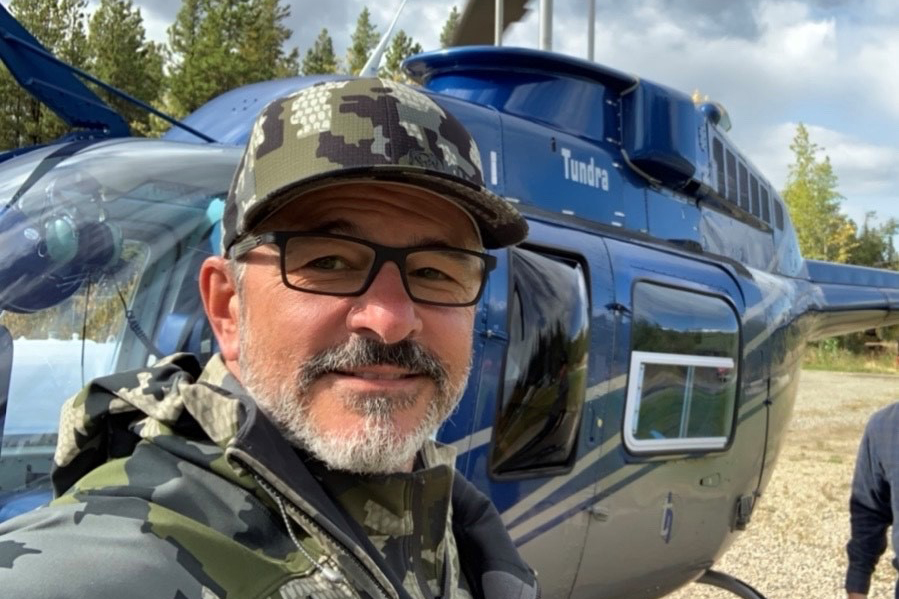Categories:
NewsNovember 20, 2019
Categories:
Health & SafetyTravelNovember 19, 2019
Tropical winds of 74 miles per hour or more accompanied by torrential rain, thunder and lightning. It is only a sampling of what you could experience during a Category 1 hurricane. In a Category 5 hurricane, wind speeds can easily double to devastating gusts of nearly 160 miles per hour.
The leading cause of hurricane-related deaths — a storm surge. As water from the ocean pushes toward the shore from the force of the winds, storm surges can demolish buildings, undermine roads and erode coastlines.
Even if you’re not located directly on the coast, damage from a storm surge can occur more than 100 miles inland. The results can be catastrophic.
Global Rescue security operations personnel study and analyze disasters and crisis response every day. Their decades of experience give them unsurpassed expertise when it comes to preparing for a natural disaster and managing the aftermath.
Here are four tips for surviving a hurricane.
Know Where to Get Hurricane Information
In the United States, you can receive Wireless Emergency Alerts on your mobile phone from the National Weather Service. Several countries — including China, Japan, Korea, Thailand and the Philippines — share monitoring responsibilities through the Japanese Meteorological Agency and the Joint Typhoon Warning Center. Be sure to monitor local emergency systems throughout the storm.
Follow Orders
Follow instructions issued by local officials. If an evacuation order is announced, follow it. Allow enough time to pack, dress in thick-soled, close-toed shoes and rugged lightweight clothing. Be sure to inform friends and family of your plans. The U.S. Department of Homeland Security offers before, during and after plans for many disasters and emergencies, including hurricanes.
Pack Smart
Pack a small “go bag” that is easily carried, such as a small backpack, in case you are forced to leave quickly. Make sure it includes a change of clothes, toiletries, extra medications and important personal documents and identifications. Have cash in small denominations on hand. Be sure to put your go bag and a pair of shoes by the door in case you need to evacuate quickly.
Find Shelter and Stay Charged
If you do have to evacuate, make sure you know your evacuation routes and your destination. If your local airport closes before you evacuate, you’re not completely out of luck.
One option is to stay at the airport. If the airport will allow you to stay, there are usually emergency supplies like, food, water and a generator. In extreme cases, the airport will be the central location for many relief and rescue efforts following the storm.
A second option is to stay at a hotel. If you’re finding a hotel, select one that is away from the coast and situated on high ground. In the U.S., there are specific laws in place to protect travelers from price gouging in these situations.
If you are sheltering in place, be prepared. Stay away from windows, close the heavy drapes to protect from shattering glass and take refuge in a small interior room, closet or hallway.
Keep mobile devices charging and limit data usage, as mobile networks can become overwhelmed. You’ll also want to bookmark any city or country website to get the latest weather updates and emergency instructions.
Global Rescue is the leading provider of advisory and evacuation services worldwide. Click here to learn more about membership options.
Categories:
Places & PartnersSecurity & IntelligenceTravelNovember 15, 2019
Cambodia is Asia’s new “it” destination, according to Forbes. For Millennials who want to experience a new culture, Cambodia is a budget-friendly destination with hostels, fair trade shops and beautiful, untouched beaches. For the baby boomers looking to expand their knowledge of different countries and cultures, Cambodia offers attentive tour guides, as well as Mekong River cruises and cooking or weaving classes.
According to the Bangkok Post Cambodia is expected to attract seven million foreign tourists (two million from China) by 2020.
The small country — bordered by Thailand, Gulf of Thailand and Vietnam — offers jungles, beaches, towns and villages with options for backpacking, fishing, paddle boarding, sightseeing and wildlife viewing.
The Khmer cuisine is flavorful and unique. Visitors can find food vendors on the streets and in small open-front restaurants. Not only is the food budget friendly, so are accommodations and transportation.
Most travelers take a vacation to Cambodia between November and March. There’s a water festival, marking the change in the flow of the Tonle Sap and Mekong River, held in October or November (depends on the year).
If you prefer traveling off season, try visiting between May to October. The beginning of May is when the rice planting season begins, marked by the Royal Ploughing Ceremony.
If you are planning a vacation to Cambodia, here are a few ideas of places to visit:
- The ancient temples of Angkor Wat
- Irrawaddy dolphins in the Mekong River in Phnom Penh
- Ride the bamboo train or visit the bat caves in Battambang
- Stand-up paddleboarding or fishing in Kampot
- Visit an elephant sanctuary in Mondulkiri
Travel and Safety Tips
There are a few things to know before traveling to Cambodia. First, check the advisories from your home government. For example, Cambodia merits a Level 1 travel advisory (Exercise Normal Precautions) from the State Department and is a moderate risk based on Global Rescue’s destination report.
Most vacations to Cambodia are trouble free, but the Foreign and Commonwealth Office of the British Government advises that some areas require increased caution, such as Phnom Penh, one of the largest cities in Cambodia. Street crime, particularly cell phone and bag snatchings, occur frequently in areas where tourists gather. UK health authorities have also classified Cambodia as having a risk of Zika virus transmission. Global Rescue rates Cambodia as a high risk for insect-borne diseases.
Other Cambodia travel advice includes:
- Consult with a travel medicine professional about necessary precautions: vaccines and other medications.
- Minimize the items you carry with you — make use of the hotel safe for your valuables.
- Using a local guide when walking in forested areas or dry rice paddies in Battambang, Banteay Meanchey, Pursat,
- Siem Reap, Pailin and Kampong Thom. Very remote areas may have land mines.
- Follow Cambodia’s official code of conduct for visitors to Angkor Wat and other religious sites. This includes a dress code.
- Follow visa requirements for visiting Cambodia. Some nationalities are required to get visas in advance in their countries.
- The Kingdom of Cambodia Ministry of Foreign Affairs offers visas online.
Headed to Cambodia? We’ve done all your travel research
Global Rescue in-house experts build custom destination reports covering everything from currency and common scams, to travel health and personal security advice.
Whether you’re planning a luxury African safari or looking to summit Mount Kilimanjaro, a Global Rescue travel membership is a perfect way to travel prepared. Click here to learn more.
Categories:
TravelNovember 12, 2019
Kayak the Na Pali Coast.
Climb Mount Kilimanjaro.
Hike the Inca trail.
Your bucket list beckons, promising the adrenaline rush you crave after sitting behind a computer all day.
Finding the right adventure companion can be difficult. Even your closest friends may not be into sky diving or mountain climbing. So you wonder: What if I went alone? Would I have a good time? And most importantly, is traveling alone safe?
The short answer: Yes. But how safe depends on how well you prepare. It’s all in how you plan and pack for your trip.
Here are some tips for traveling alone safely:
Planning Your Solo Adventure Trip
Consider an Adventure Guide
Just because you’re traveling solo doesn’t mean you have to figure things out on your own. An adventure guide is a great way to ensure you have a safe and fun trip. You may pay more, but things are less likely to go awry – and you’ll still have a great experience.
When it comes to adventure guides, do your research. Referrals are a great place to start. Adventurers love sharing knowledge and guides are likely to treat you better — or even cut you a deal — if they had a positive experience with your friend.
Don’t be satisfied with a quick glance on TripAdvisor. Ratings are often inflated on popular travel sites. Get creative with your Google search and pair it with words like “scam” or “liar” or “expensive” to see if anything nefarious surfaces. If a price seems too good to be true (for example, far cheaper), it probably is.
Register Your Trip with the Local Consulate
Enroll in the Smart Traveler Enrollment Program (STEP), which allows you to register your trip with the local consulate.
Do Your Homework
Read up on your destination before you leave. Get the latest news so you can be aware of potential political turmoil or weather events that could alter your experience. The U.S. Department of State’s travel advisory page is a great place to start.
Global Rescue members also have access to detailed destination reports for more than 215 countries and principalities worldwide, which include entry requirements and information related to currency information and even common scams.
As you consider what to wear on your excursion, be sure to research appropriate social and dress codes, packing accordingly.
Prepare for Sickness or Injury
Make sure you have all immunizations and know what sicknesses are endemic to your destination. The reality is, if you’re traveling alone, there is no one by your side to tell you if you look sick or to help you if you fall ill. You must look out for yourself.
The Centers for Disease Control and Prevention is a great resource for finding out what vaccinations you need and what diseases to be aware of while you travel. Check out their Travelers’ Health Tool here. We’ve also written about what to do if you get a dangerous illness while traveling here.
If you’re participating in an extreme sport, make sure to ask a guide about the risk for injury. Also consider searching online about injuries that have recently occurred (e.g., Google “Mount Kilimanjaro injuries 2019”). You may learn of an uptick in injuries or deaths (this could be related to weather, for example) — and having this knowledge will help you prepare.
Inform Friends Back Home of Your Schedule
If you’re going to be off the grid, it’s wise to inform a few friends back home of your itinerary. Establish check-in times and make contact as you have reception. That way, if they don’t hear from you when they expect to, they can take measures to track you down.
Overall, when it comes to traveling smart, a little preparation and preparedness will go a long way. Our experts at Global Rescue offered their advice about traveler responsibility in a recent post on the five habits of smart travelers.
Packing for Your Solo Adventure Trip
Make Copies of Your Passport
Carry your passport close to your body and carry copies of your passport in another bag, also with you. That way, you have copies of your most important document on you, even if your passport is stolen.
Global Rescue travel services memberships include travel assistance, including help with unexpected passport and visa issues.
Print Out Your Itinerary and Contacts
Cell service is often unavailable or unreliable on some of the most exciting adventure trips. And cell phones die or get dropped off mountains and into rivers. Make sure your plans are printed, in a plastic bag and on your person. This should also include your emergency contacts and insurance carrier.
Carry a Survival Kit
For those traveling to the remote and rugged bush, a “survival kit” is a must. If technology doesn’t work and you can’t get directions, at least you have a compass. A satellite phone will keep you in touch with others while traveling off the grid. And, in especially dire situations, clean water can be hard to come by. A small filter packed in your go bag could save your life.
Pack a small bag with these basics: a head lamp, matches, a multi-tool (such as a Leatherman or Swiss Army multi-tool), a compass, sanitizing wipes, first aid supplies and a water filter.
Global Rescue experts also have plenty of advice on what to pack in a first aid kit as well as a master packing list for a wide range of outdoor travel.
Have Support in Place if Something Goes Wrong
Even the most thorough planning and packing can’t prevent accidents from happening. This is where Global Rescue comes in.
We are the leading provider of worldwide medical evacuation, field rescue and advisory services. With operations teams standing by 24/7/365, travel assistance and advisory are just a few services included in a membership.
Especially if you’re traveling alone, you need the safety, security and peace of mind to know that we’re there for you when it matters most. Click here to learn more.
Categories:
Places & PartnersSecurity & IntelligenceTravelNovember 7, 2019
Is an African safari tour on your bucket list? Safaris provide an authentic African experience: observing and photographing wildlife, hiking, sightseeing, learning local traditions and exploring villages and terrain.
You’ll be able to choose a trip that suits your age, interests and abilities, such as an overland safari trip camping with a group, or a custom, individual safari with a guide.
November and December are two of the best months to take an African safari — you’ll avoid the heat and humidity, you’ll see animal migrations and, if you travel to South Africa, you’ll be able to birdwatch.
Thirty million tourists visit Africa each year, many going on safari. In Kenya alone, visitors grew to more than two million in 2018 from 1.4 million in 2017, according to the World Tourism Organization. The World Tourism Organization also predicts that Africa could more than double the number of tourist arrivals from 50 million in 2010 to 134 million in 2030.
The allure of a trip to Africa for safari is a major trend but beware: a few of the best African countries for safari also have increased risk for travelers. Here’s what to expect on safari in these three suggested locations and how stay safe during your trip to Africa.
Zambia
According to TripSavvy.com, the best time to enjoy Zambia’s wildlife on an African safari tour is the end of the dry season which is September through mid-November. You’ll see elephants, buffalo, impala and zebra in the Lower Zambezi Valley.
In November, lucky visitors may witness wildebeest gathering in Liuwa Plain National Park. Calving season runs December to March and tens of thousands of baby wildebeest take their first steps. If you’re a birder, Botswana’s Okavango Delta fills up in November with migrating birds starting their breeding season (which lasts until March).
Kenya
Love landscapes? Kenya offers savannas, deserts, highlands, seasides, a 17,000-foot mountain and a 50-foot rift splitting open the terrain. On Kenya’s beaches, you’ll be able to snorkel, swim and watch humpback whales on their migratory route.
The best time to go on safari in Kenya is between October and December, which is considered off season with cheaper rates on accommodations and tours. Click here for a handy rainfall and temperature chart of Kenya to help you choose the timing of your trip.
Tanzania
If you’d like to spend the holidays in the bush, consider Tanzania with its dry weather, rolling hills and expansive plains. This East African country offers a diversity of wildlife — the Ngorangoro Crater is home to Tanzania’s largest rhinoceros population — and two national parks: Serengeti and Tarangire.
Tanzania bird migrations (wattle-eyes, bee-eaters, pygmy falcons and flamingos) from Europe to East Africa occur between October and April, making it the best time to take an African safari for birdwatchers.
Travel and Safety Tips
The U.S. Department of State offers travel advisories for each African country. Zambia has no warnings, but Kenya and Tanzania each have a Level 2 Travel Advisory (Exercise Increased Caution). This may mean an increased risk of crime, terrorism and kidnapping in Kenya (as of April 9, 2019) and violent crime, terrorism and lack of police resources in Tanzania (as of September 27, 2019).
Although the country may be classified as a Level 2, Global Rescue recommends researching each region, which may be a Level 3 or Level 4 to make appropriate risk related decisions with your travel plans. For example, the Foreign and Commonwealth Office of the British Government advises against all but essential travel within 60km (37 miles) of the Kenya-Somali border, but this advisory doesn’t include Kenya’s safari destinations in the national parks, reserves and wildlife conservancies.
Getting ready to take an African safari? Global Rescue experts recommend:
- Consulting with a travel medicine professional about necessary precautions: vaccines, malaria pills and other medications.
- Making sure your passports and visas are in order.
- Only consuming food that has been sufficiently cooked and avoiding uncooked produce that has been washed with tap water.
- Keeping your wealth (cash, jewelry, cameras) hidden.
- Listening to your guide and following park rules and regulations.
- Respecting the wildlife.
Headed to Africa? We’ve done all your travel research
Global Rescue in-house experts build custom destination reports covering everything from currency and common scams, to travel health and personal security advice.
Whether you’re planning a luxury African safari or looking to summit Mount Kilimanjaro, a Global Rescue travel membership is a perfect way to travel prepared. Click here to learn more.
Categories:
Press ReleaseNovember 6, 2019
Lebanon, N.H. – Global Rescue will celebrate giving by donating a portion of new membership fees during #GivingTuesday on December 3, 2019 to support the Glen Doherty Memorial Foundation (GDMF), an organization helping U.S. special operations veterans transition to civilian life.
Glen Doherty, a former Global Rescue Operations Specialist and U.S. Navy SEAL, was killed in the terror attacks on the U.S. Consulate in Benghazi, Libya in 2012.
“Before his death, Glen worked with us for several years. He was an outstanding member of the team and a joy to work with. We are honored to continue his lasting memory by donating 10 percent of new membership fees during #GivingTuesday to support the GDMF,” said Dan Richards, Global Rescue CEO.
The GDMF provides scholarships for current or former special operation professionals and their families to be used for traditional education, vocational and non-traditional training.
“Our mission is to help special operations professionals transition out of the military and back into civilian life by means of education and vocational scholarships,” said Kate Quigley, Glen’s sister and GDMF President.
“Being a GDMF scholar provides extremely useful tuition assistance. I am proud to be part of the community of scholars and the foundation itself,” said Michael Mattimoe, a former Navy SEAL who is currently transitioning from active duty and pursuing a Masters of Public Administration degree at Harvard Kennedy School.
“Glen’s dream was to go back to school to become a physician assistant. Sadly, the dream was never realized. At GDMF we are helping Special Operations individuals, like Glen, realize that dream. Through educational scholarships our recipients are transitioning to the next phase of their lives and we are thrilled to be able to ease the financial burden for these amazing individuals,” Quigley said.
David Nicastro, a former Marine who was selected to the Second Fleet Anti-Terrorism Security Team Company, was twice awarded a GDMF scholarship. “I was in a similar type of work as Glen and I was awarded the scholarship two years in a row while I attended and then graduated from the Massachusetts State Police Academy,” he said.
“We’ve been lucky enough to find amazing candidates to become scholarship recipients. A lot of our scholars go back to school to earn degrees and certifications in medicine, business, flight school, law enforcement, cybersecurity and more. The applicants are remarkably impressive,” Quigley added.
“GDMF has helped me have a successful and ongoing transition as I prepare for a future post-military career,” said Ben Tartell, a former Navy SEAL who is pursuing his MBA at the Wharton School of the University of Pennsylvania.
“With over 70 scholarships given out in seven short years we are incredibly proud of the family that we have grown. Each deserving scholarship recipient is working on setting themselves up for success for the next chapter of their lives. We are honored and humbled to help such amazing individuals,” Quigley said.
Dave Dauphinais, a former Navy SEAL, used his scholarship to complete degrees at Harvard’s School for Public Policy and the Tuck School of Business at Dartmouth.
“The financial benefits absolutely provided for my family in a way that I would not have been able to manage on my own,” he said.
Giving Tuesday takes place December 3rd and is a global day of giving that harnesses the collective power of individuals, communities, and organizations to encourage giving and to celebrate generosity worldwide.
About Global Rescue
Global Rescue is the world’s leading provider of medical, security, evacuation and travel risk management services to enterprises, governments and individuals. Global Rescue has provided medical and security support to its clients, including Fortune 500 companies, governments and academic institutions, during every globally significant crisis since 2004.
About the Glen Doherty Memorial Foundation
The Glen Doherty Memorial Foundation mission is to ease the transition from military life and work to that of a civilian by helping fund educational costs for Special Operation individuals and their children. GDMF is a 501(c)(3) charity organization dedicated to honoring and preserving the memory of Glen Doherty and all those who have paid the ultimate sacrifice in defending our nation in the Global War on Terror.
About Giving Tuesday
Founded in 2012, Giving Tuesday has inspired millions of people to give back and support the causes they believe in. Over $400 million was raised online in 2018 to benefit a tremendously broad range of organizations, and much more was given in volunteer hours, donations of food and clothing, and acts of kindness.
For Journalists
To learn more, contact Bill McIntyre at +1.617.210.8134
bmcintyre@globalrescue.com
Categories:
Health & SafetyTravelNovember 5, 2019
If you’re injured in the wilderness, channel your inner MacGyver by making use of whatever is at hand. Orvis Fly Fishing specialist Dan Davala asked the Global Rescue in-house operations team how adventurers can think outside of their common gear. Here are five improvised emergency medicine techniques for wilderness injuries.
Improvised Emergency Splints
Extremity injuries are going to need a splint. Global Rescue recommends carrying a SAM splint in your first aid kit but, in some instances, you are going to have to use what you have on hand.
“An improvised splint to an extremity fracture or injury is not going to be pretty, but do not walk on a fractured extremity unless it is splinted. That is a really good way to turn a fracture into a life-threatening emergency,” said Jeff Weinstein, Medical Operations Supervisor at Global Rescue.
Weinstein suggested looking for rigid items to support the injury.
“Hiking poles make a great structure for a leg splint. Sticks, if they are straight and hard, can be good,” said Weinstein, who is a critical care paramedic with an Advanced Wilderness Life Support (AWLS) certification. “You need a rigid, structured support for the injury, and you can make it out of whatever materials you have around you.”
Dave Keaveny, Medical Operations Specialist with AWLS certification, agreed.
“Improvisations are the name of the game with emergency medicine in the wilderness, whether I am out on my own and come across someone needing help or responding to someone in a medical capacity,” he said. “The first thing I do is work out of the patient’s bag. No matter the backpack, even my 19-liter office backpack, has a foam soft frame in it. Anything larger than 30-liters has some sort of foam plus a rigid frame inside. I’ve done numerous splints from backpacks.”
If you need a fast solution for an arm injury or shoulder dislocation, Weinstein recommended this improvisational sling: “If you are wearing a t-shirt, pull the arm into your body, grab the bottom of the t-shirt and pull it up over your arm and put a safety pin in it.”
Splint Padding
A splint needs padding. One made with sticks or hiking poles will require some improvised emergency techniques.
“You don’t want the rigid materials of the splint to rub against the injury and create a problem,” said Weinstein. “You can take the fluff out of a pillow, or use leaves, or tear apart a shirt. Anything to pad the structure supports from making contact with the body.”
Keaveny checks the backpack for padding materials.
“Take their extra clothes to pad a splint. If they have a puffy in there, use that puffy for splints. There are a lot of commercial products out there, but use what you have,” said Keaveny, an advanced wilderness EMT.
All-Purpose Duct Tape
Duct tape is handy for any wilderness situation from boot repairs to splints to tent patches. If you don’t want to carry the whole roll in your backpack, Weinstein suggested unrolling the duct tape, then folding it in on itself to make a smaller rectangle. You could also wrap a length of duct tape around your water bottle or a pencil and peel off what you need later. Some folks even cut the cardboard roll out of the center and step on it, making the duct tape flat and easier to pack and store.
“Duct tape is huge in improvised emergency medicine,” Weinstein said. “I always carry duct tape in my kit.”
Quick Heat Source
You’re afraid, you’re stuck in a remote area, you’re cold, you’re not quite hypothermic yet – or maybe you are – and you’re trying to survive the night. Weinstein adds two items to his backpack gear for just that situation: trash bags and tea candles.
“I carry big, commercial, kitchen trash bags with me,” he said. “Rip a hole at the bottom of the trash bag and put your head through it. I carry a bunch of tea light candles, those small little candles. You light the candle, you put it between your legs, and you crouch down with the trash bag over you. It provides an enormous amount of heat for two or three hours. Repeat with another candle and you’ll stay warm all night.”
Keaveny also recommended sitting on that backpack.
“The foam and rigid frame will protection from conduction and losing heat that way,” he said.
These two suggestions are not improvised emergency medical treatments, but they may prevent two life-threatening injuries: hypothermia and frostbite.
Practice Makes Perfect
Improvised emergency medicine looks so easy in the movies, but what you see on the silver screen doesn’t always happen in real life. Keaveny and Weinstein recommended practicing your splint, padding and other improvised medicine techniques at home.
“I practice with my family all the time. I’ll walk into the room, I’ll throw that tourniquet down and I’ll say, ‘Tourniquet training! You’re shot! Go!’ and my daughter and wife have to apply a tourniquet to their leg,” Weinstein said. “It is important to make sure you are familiar with the skills in that emergency situation.”
“It all comes down to practice,” Keaveny said.
If you have an illness or injury in the wilderness and improvised emergency medical techniques aren’t enough, help is just a phone call away. Click here to learn more about Global Rescue’s travel memberships.
Categories:
Press ReleaseNovember 4, 2019
London, November 4, 2019 – A new body of research was unveiled today that analyzed the impact of 90 crises between 2001 and 2018 examining the time to recovery as well lost arrivals and lost visitor spending. Of the four crisis categories analyzed, political instability proved the most challenging with average recovery times of more than 22 months while terrorist or security related incidents having the shortest average recovery time of 11 and a half. The average recovery times for natural disasters and disease out breaks were 16.2 months and 19.4 months, respectively.
The study was conducted by the World Travel & Tourism Council [WTTC], the global body that represents the private sector of the travel & tourism industry, in partnership with Global Rescue, a membership organization which provides medical, security, evacuation, travel risk and crisis management services.
Gloria Guevara, President & CEO, WTTC said: “This comprehensive research shows just how resilient the travel & tourism industry truly is. While there is still work to be done, the data shows that recovery times have fallen significantly over the past two decades, and that major strides have been made. It is crucial that we continue to learn from previous incidents and continue to come together through public private partnerships to make a real difference in reducing both the economic and human impact.”
Key findings included:
- The travel & tourism industry is more resilient than ever – average recovery times have decreased from 26 months in 2001 to 10 months in 2018.
- Political instability has a greater impact than terrorism on issues and recovery times. Governments have the opportunity to improve but need to engage with the private sector.
- Of the four crisis categories analyzed, political instability proved the most challenging [with average recovery times of 22.2 months] with terrorist or security related incidents having the shortest average recovery time of 11.5 months. Additionally, the average recovery times for natural disasters and disease out breaks were 16.2 months and 19.4 months respectively.
- Public private partnerships and communications are critical for preparedness and prevention.
*Note: Of the 90 crises analyzed – 32% were terrorism/security related, 13% were disease/outbreaks; 19% were political instability and 36% were natural disasters.
Later today, WTTC CEO will host a panel discussion at the World Travel Market revealing the research findings of the report entitled “Crisis Readiness: Are You Prepared and Risk Resilient to Safeguard Your People and Destinations?” joined by Daniel Richards, Chief Executive Officer, Global Rescue, Isabel Hill, Director, US National Travel & Tourism Office, Government of the United States of America, Rania Al-Mashat, Minister of Tourism of Egypt and Najib Balala, Cabinet Secretary for Tourism & Wildlife, Kenya.
One of the panel participants, Dan Richards, Chief Executive Officer, Global Rescue said: “Sometimes as challenging as the crisis itself is the preparation, management and coordination of the resources needed to mount an effective response. We are optimistic that by working together, we will be able to further improve the sector’s resilience to systemic shocks.”
In the report, WTTC and Global Rescue, offer recommendations on how destinations can mitigate the impact of a crisis, showcasing successful examples from the likes of Kenya, Mexico, Hawaii and Japan. The report also highlights the importance of being prepared and the need for coordinated management to ensure a successful recovery.
To view the full report, please visit www.wttc.org/XXXX
The World Travel & Tourism Council (WTTC) is the body which represents the Travel & Tourism private sector globally. Members include over 180 CEOs, Chairmans and Presidents of the world’s leading Travel & Tourism companies from all geographies covering all industries. WTTC works to raise awareness of Travel & Tourism as one of the world’s largest economic sectors, supporting one in 10 jobs (319 million) worldwide and generating 10.4% of world GDP. WTTC conducts research on the Economic Impact of Travel & Tourism in 185 countries for nearly 30 years. In 2017, the Travel & Tourism industry experienced 3.9% growth, compared to the global economy (3.2%).
Categories:
NewsNovember 4, 2019
Categories:
Places & PartnersSecurity & IntelligenceTravelOctober 31, 2019
Day of the Dead is a huge Mexican celebration drawing a million visitors, many from the United States, who contribute $208 million in tourist revenue. Known locally as Día de los Muertos, this annual tradition remembers and honors deceased family members. Families build altars or shrines at home or at cemeteries, offering goods like toys for children and favorite treats for adults.
The celebration is famous. There are parades and parties — with elaborate make up and costumes — as well as songs, dances and poems to show love and respect for lost loved ones. National Geographic’s Top 10 Things to Know about Day of the Dead blog provides a detailed overview of Day of the Dead traditions, including food, drink and paper crafts.
With the high numbers of travelers headed to Mexico for Day of the Dead activities, traveler safety is an important planning consideration. Read on to learn how to enjoy the celebration in these four locations and minimize travel risks.
Mexico City’s Day of the Dead
Most cities and towns offer celebrations and Day of the Dead activities. Mexico City is a fantastic place to celebrate Day of the Dead, as the city puts on an elaborate parade, decorates the Zocalo (main square) and the popular Reforma Avenue. A calendar is hard to find, but Mexico City Streets blog by a writer and translator based in Mexico City is updating one as information surfaces. Visit Mexico’s Facebook page also offers some information.
Mixquic Day of the Dead Traditions
Mixquic, a small town located south of Mexico City, is known for its elaborate Day of the Dead celebration. The graveyard of San Andres Mixquic, which also used to be a convent, is cleaned and decorated by community members. Impressive altars are placed along the tombs, then lit up by candles. Thousands of people bring their own candles as they walk around the tombs to “show the way for the dead” so they can come back for the night. Some information can be found on Dia De Muertos – Mixquic 2019.
Aguascalientes Day of the Dead Activities
Aguascalientes is located about five hours north of Mexico City. It is the birthplace of engraver Jose Guadalupe Posada, the artist credited with the creation of La Calavera Catrina (the skeleton wearing the elegant dress and exotic hat). Their Festival de las Calaveras (Festival of Skulls) lasts nearly a week and people dress up as Catrinas to enjoy dance and music, theater plays, gastronomic events and a large parade at the end of the festival.
Oaxaca Day of the Dead Traditions
It’s Oaxacan mortuary custom after a person’s death and burial to make a sand tapestry in their home with colored sand, rice, seeds, dried beans and flowers. Sand tapestries are also part of Oaxaca Day of the Dead traditions. You’ll find unique and colorful tapestries — detailed scenes of skeletons, saints and more — on public streets, in shops and in public places like the Museo del Palacio, with competitions for the best design.
Travel and Safety Tips
Day of the Dead traditions differ by region, but all welcome visitors. Despite the high numbers of travelers to Mexico, the country still merits a Level 2 travel advisory (Exercise Increased Caution) from the State Department and a high degree of caution from the Government of Canada’s Travel Advice and Advisories.
If you’re planning on participating in Mexico’s Day of the Dead activities, Global Rescue experts suggest the following:
- Exercise situational awareness in large crowds, as opportunistic crime like pickpocketing is common.
- Respect the local culture and customs, as Day of the Dead is a religious holiday.
- Know how to protect yourself from tainted alcohol.
- Double check ground transportation and routes with your hotel or tour provider. Some Day of the Dead events may require travel through higher risk regions.
- If staying in Mexico City, choose a safe, well-lit, central neighborhood in the Centro, Roma or Condesa districts.
Headed to Mexico? We’ve done all your travel research
Global Rescue in-house experts build custom destination reports covering everything from currency and common scams, to travel health and personal security advice.
If experiencing Day of the Dead traditions is on your bucket list, a Global Rescue travel membership is a perfect way to travel prepared. Click here to learn more.
Categories:
Missions & Member TestimonialsOctober 29, 2019
Louis Cairo, owner and managing partner of GWC Injury Lawyers in Chicago, Illinois, delivers the best legal care that he can to his clients. When he suffered an injury during his trip to British Columbia, Canada he was pleased to receive the same standard of best-in-class care from Global Rescue.
“My trip to British Columbia was rugged, daily climbing mountains on horseback and foot while living in the bush,” Cairo said. “So my Global Rescue membership was even more important for me.”
Cairo originally bought his Global Rescue membership at a Safari Club International (SCI) tradeshow.
“I have been most fortunate in my worldly travels — multiple safaris in Africa, New Zealand, Canada, Alaska and throughout the states — I have never suffered an injury,” Cairo said. “But given my line of work, I knew being prepared for an emergency situation was necessary for me personally and for the peace of mind for my wife and family. Global Rescue was an absolute priority.”
Cairo’s trip included travel to the Stikine Region, an unincorporated area in northwestern British Columbia. The region is about the size of Alabama and home to about 1,000 people, making it the least densely inhabited region in British Columbia and Canada as a whole.
“When my horse rolled down the side of a very steep incline, catapulted me 15 feet laterally and caused me to land at the base of the incline about 15 feet lower in elevation, I knew my trip was over,” Cairo said. “The pain in my right leg and knee was excruciating. I struggled to ride my horse the hour and half back to camp, but the next day I could not even walk.”
Cairo’s injuries were not life threatening, but medical help was six hours away from camp.
“There was no way I could have possibly gotten back on a horse and ridden through mountains, bogs and rivers to get to the lake where a float plane could pick me up and take me to civilization,” he said.
Cairo had never called Global Rescue before, but it was his only option for medical evacuation services. Using his satellite phone, he reached out to his secretary in Chicago who had his itinerary, outfitters contact information and Global Rescue membership information.
“Well, let me tell you, Global Rescue did not disappoint,” Cairo said. “Amazingly, six hours after her call, a chopper was landing a few hundred yards from our camp, which was buried in the thick trees. The chopper brought me back to Dease Lake. Within an hour, I was in the emergency room for medical care.”
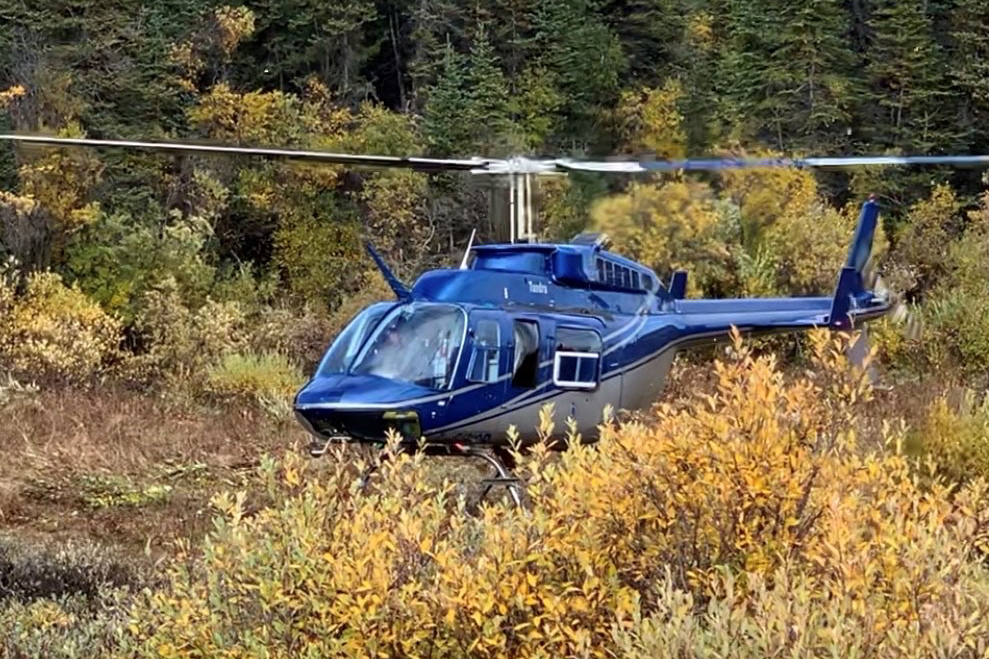
This speed to care made all the difference in Cairo’s recovery.
“Given Global Rescue’s prompt response time, cutting through the red tape and putting my safety first, my medical care was promptly delivered and my injuries were far less severe than they would have been had I been compelled to ride horseback under the grueling conditions of the British Columbia mountains with torn ligaments in my knee,” Cairo said. “But if not for Global Rescue, I would probably still be sitting in the bush and my knee damage would have been beyond repair.”
Cairo is already planning his next trip — Alberta, Canada — and his Global Rescue membership will be in his wallet.
“Despite never suffering an injury before, I have never traveled without knowing that I had medical evacuation services,” Cairo said. “We all know that ‘accidents happen’ but when they happen in the middle of the bush, desert, jungle and the like, the potential devastation of an injury can be magnified 100-fold. So Global Rescue is never an ‘option.’ It is a necessity.”
Global Rescue memberships include personalized advisory services, 24/7 emergency assistance and medical evacuation services. To learn more about memberships, click here.


